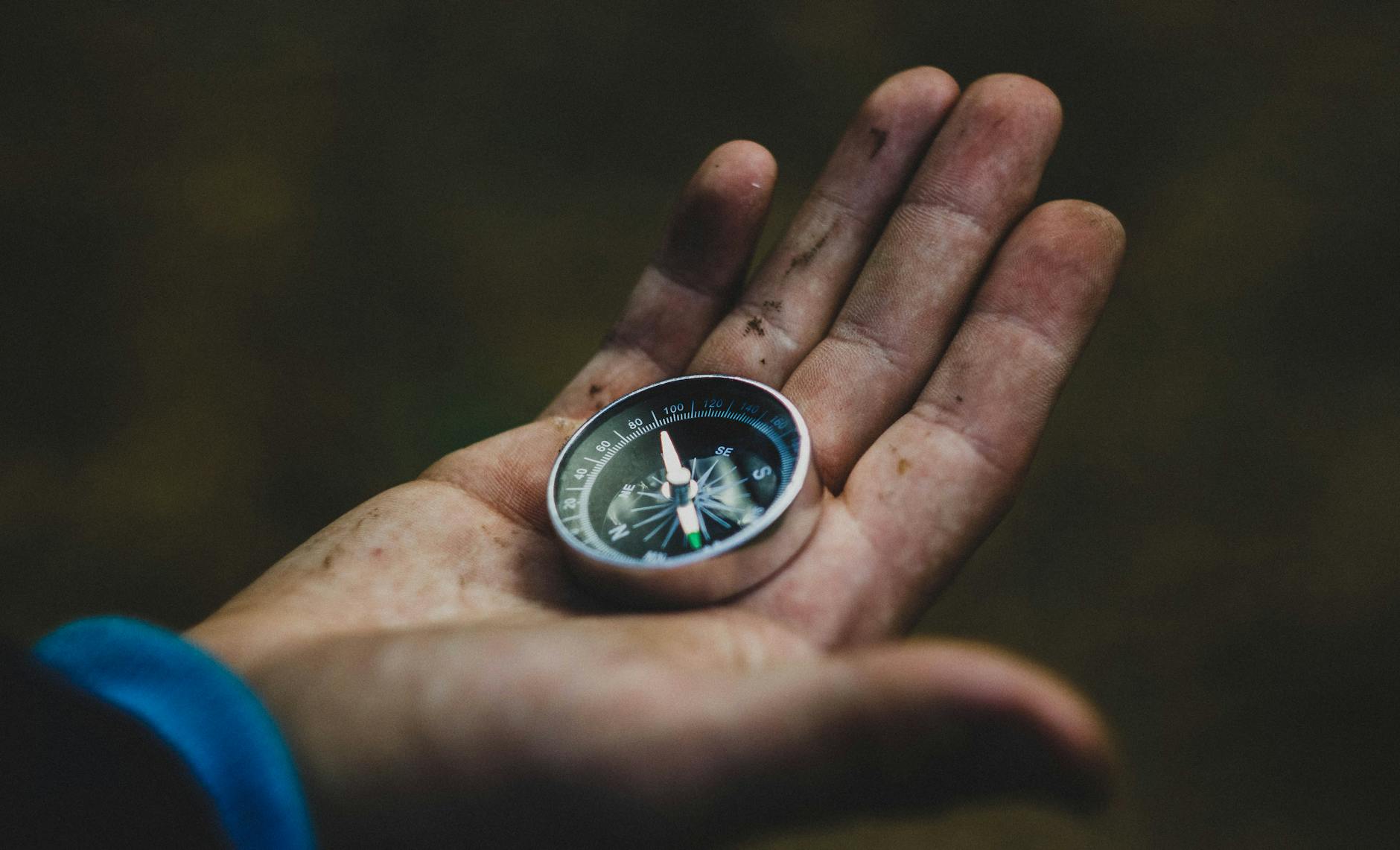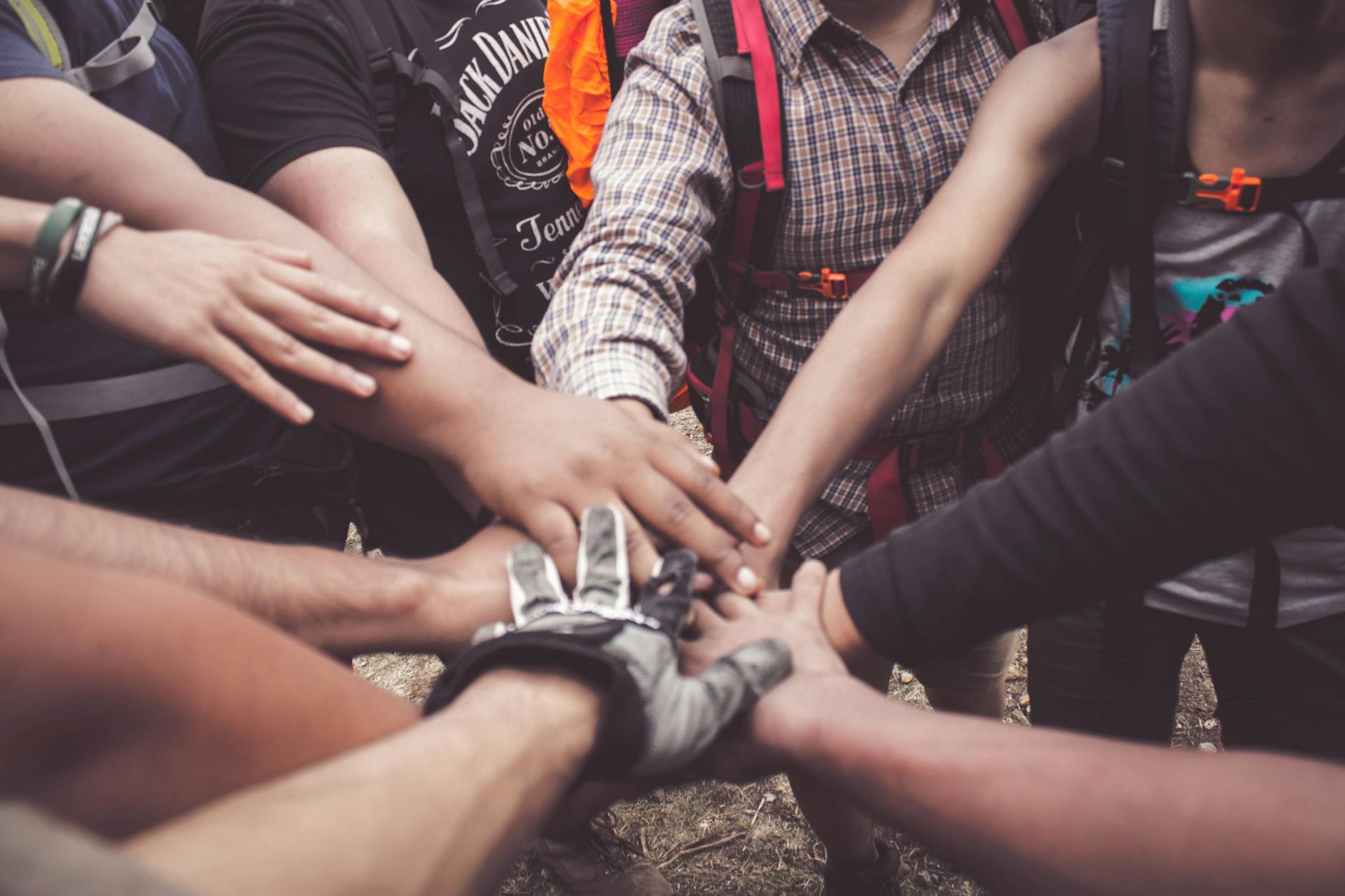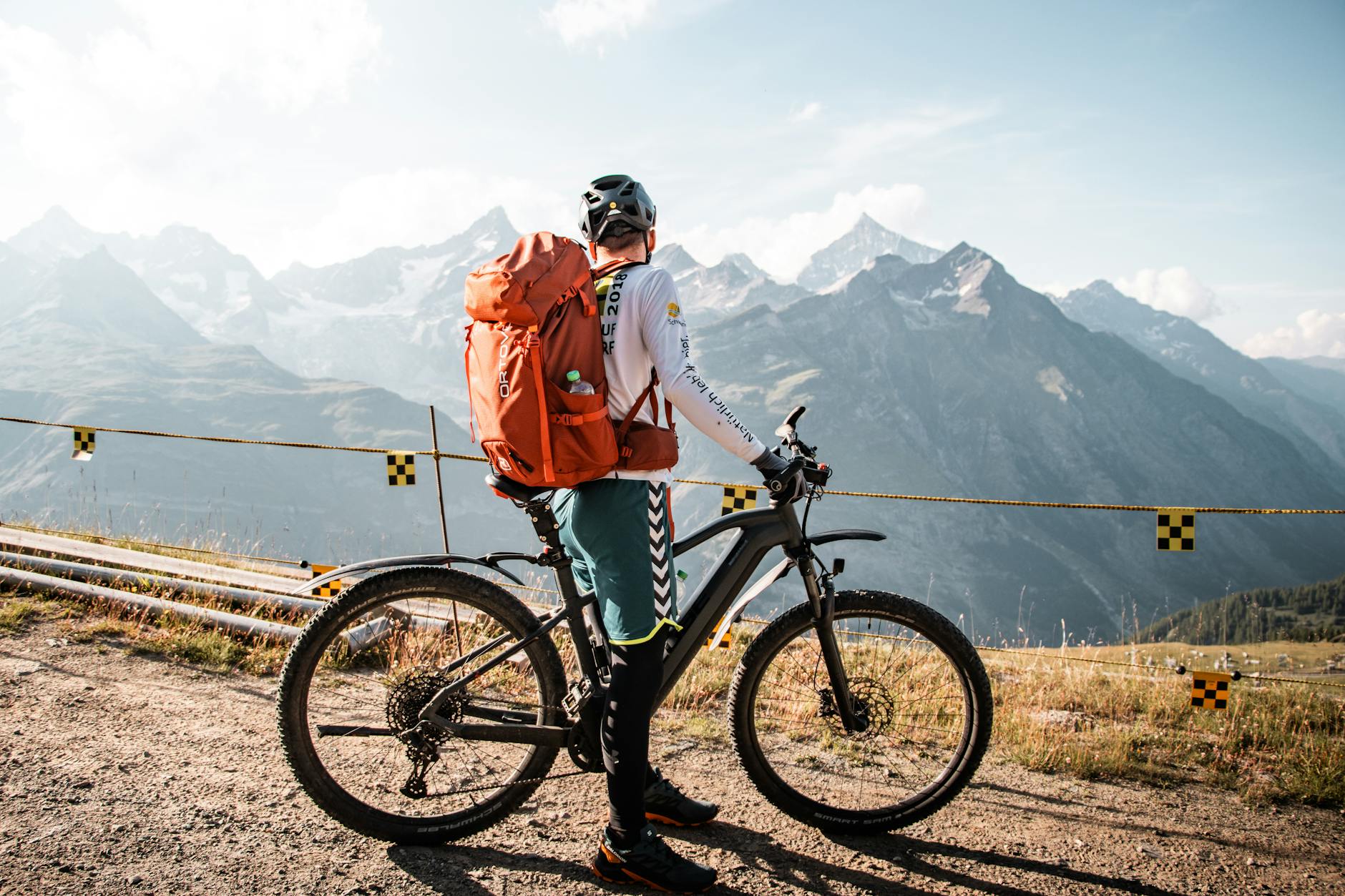Picture this: You’re standing at the trailhead, the crisp mountain air filling your lungs, and the promise of adventure beckoning you forward. But as a woman hiking alone, a nagging voice in your head whispers, “Is it safe?” 🏞️👱♀️
Hiking alone as a woman is an empowering and liberating experience, allowing you to connect with nature, build confidence.
Don’t let fear hold you back from experiencing the empowering thrill of solo hiking. With the right knowledge and preparation, you can conquer those trails with confidence. In this post, we’ll explore 10 essential safety tips that will not only keep you secure but also enhance your solo hiking experience. From mastering navigation skills to connecting with fellow hikers, we’ve got you covered every step of the way.
So, lace up your boots and get ready to embark on a journey of self-discovery and outdoor exploration. Let’s dive into these game-changing tips that will transform you from a hesitant hiker to a trail-blazing adventurer!
Plan and Prepare

A. Research your trail
Before embarking on your solo hiking adventure, it’s crucial to thoroughly research your chosen trail. This step is fundamental for ensuring a safe and enjoyable experience. Here’s what you need to focus on:
- Trail difficulty level
- Distance and estimated time
- Terrain characteristics
- Potential hazards
- Cell phone coverage areas
- Water sources
- Wildlife presence
| Research Aspect | Why It’s Important |
|---|---|
| Trail difficulty | Ensures you’re prepared physically and mentally |
| Distance & time | Helps plan for daylight hours and supplies needed |
| Terrain | Informs proper footwear and equipment choices |
| Hazards | Allows for preparation and risk mitigation |
| Cell coverage | Critical for emergency situations |
| Water sources | Essential for hydration planning |
| Wildlife | Guides necessary precautions and gear |
B. Check weather conditions
Weather can make or break your hiking experience. Always:
- Check the forecast for your hiking day
- Look at extended forecasts for multi-day hikes
- Be aware of seasonal weather patterns
- Understand how weather affects your specific trail
C. Inform someone of your plans
Safety begins with communication. Always:
- Share your detailed itinerary with a trusted friend or family member
- Include expected start and end times
- Provide trail name and parking location
- Agree on check-in times and emergency procedures
D. Pack essential gear
Proper gear is your lifeline when hiking alone as a woman. Essential items include:
- Navigation tools (map, compass, GPS)
- First-aid kit
- Emergency shelter
- Fire-starting materials
- Extra food and water
- Multi-tool or knife
- Headlamp or flashlight
- Sun protection
- Emergency communication device
Stay Alert and Trust Your Instincts

Be aware of your surroundings
When hiking alone as a woman, maintaining situational awareness is crucial. Keep your senses sharp and observe your environment continuously. Here are some key points to remember:
- Regularly scan your surroundings for potential hazards or suspicious activity
- Pay attention to changes in terrain, weather conditions, and wildlife presence
- Take note of landmarks to help with navigation and orientation
- Be mindful of other hikers or individuals you encounter on the trail
Listen to your gut feelings
Trusting your instincts can be a powerful tool for personal safety when hiking alone as a woman. Your intuition often picks up on subtle cues that your conscious mind might miss. Consider the following:
| Gut Feeling | Recommended Action |
|---|---|
| Uneasiness | Change your route or return to a safe area |
| Suspicion | Maintain distance from the source of concern |
| Danger | Leave the area immediately and seek help if necessary |
Avoid distractions like headphones
While music or podcasts can be enjoyable on a hike, they can significantly impair your awareness. To stay alert when hiking alone as a woman:
- Keep your ears open to hear approaching wildlife or people
- Use your sense of hearing to detect changes in water flow or wind patterns
- If you must use headphones, keep the volume low and use only one earbud
- Take regular breaks to listen to your surroundings without any audio interference
By staying alert and trusting your instincts, you’ll be better equipped to handle unexpected situations and enjoy a safer solo hiking experience. Next, we’ll explore essential equipment that can further enhance your safety on the trail.
Equip Yourself for Safety

Carry a reliable communication device
When hiking alone as a woman, a dependable communication device is your lifeline. Opt for a fully charged smartphone with a portable battery pack. Consider investing in a satellite communicator for areas with poor cell coverage. These devices allow you to send SOS signals and messages even in remote locations.
Bring a personal safety alarm
A personal safety alarm is a small but powerful tool that can deter potential threats and attract attention if needed. Choose a compact, loud alarm that’s easy to access in an emergency.
Pack a first-aid kit
A well-stocked first-aid kit is essential when hiking alone as a woman. Include:
- Bandages and gauze
- Antiseptic wipes
- Pain relievers
- Tweezers
- Blister treatment
- Any personal medications
Consider self-defense tools
While prevention is key, having self-defense tools can provide an extra layer of security. Options include:
| Tool | Pros | Cons |
|---|---|---|
| Pepper spray | Effective, easy to use | Limited range |
| Hiking poles | Dual-purpose, non-lethal | Require practice |
| Personal alarm | No training needed | Battery-dependent |
Remember to check local regulations regarding self-defense tools before carrying them on your hike. With these safety essentials, you’ll be better prepared for your solo adventure. Next, we’ll explore the importance of mastering navigation skills to ensure you stay on track during your hike.
Master Navigation Skills

Learn to read maps and use a compass
Mastering navigation skills is crucial for any solo hiker, especially hiking alone as a woman. Start by learning to read topographic maps and use a compass effectively. These skills can be lifesavers when you’re in unfamiliar territory.
- Practice reading contour lines to understand elevation changes
- Identify key features like water sources, campsites, and potential hazards
- Learn to triangulate your position using landmarks
| Skill | Importance | Practice Method |
|---|---|---|
| Map reading | High | Study maps at home, attend workshops |
| Compass use | High | Practice in local parks, take orienteering courses |
| Triangulation | Medium | Use apps to learn, then practice in the field |
Familiarize yourself with trail markers
Understanding trail markers is essential for staying on the right path and avoiding getting lost. Different parks and regions may use various marking systems, so research before your hike.
- Learn common color codes (e.g., white for Appalachian Trail)
- Understand blazes and their meanings (single, double, turns)
- Recognize cairns and how to follow them in open terrain
Download offline maps on your phone
While traditional navigation skills are crucial, technology can provide an extra layer of safety. Download offline maps of your hiking area before setting out.
- Use apps like AllTrails or Gaia GPS for detailed trail information
- Ensure your phone is fully charged and bring a portable charger
- Remember: technology is a backup, not a replacement for map and compass skills
By mastering these navigation skills, you’ll hike with greater confidence and safety. Next, we’ll explore the importance of timing your hike wisely to maximize safety and enjoyment.
Time Your Hike Wisely

Start early in the day
Starting your hike early in the day is crucial for safety and enjoyment. Here’s why:
- Increased visibility
- Better wildlife encounters
- Cooler temperatures
- Less crowded trails
| Time of Day | Advantages | Disadvantages |
|---|---|---|
| Early Morning | Cooler temps, wildlife activity, fewer people | Potential fog or dew |
| Mid-Morning | Good visibility, warmer temps | More crowded trails |
| Afternoon | Warmest part of day | Higher risk of thunderstorms, most crowded |
Plan to finish before dark
Timing your hike to finish before sunset is essential for safety. Consider:
- Trail length and difficulty
- Your average hiking speed
- Time for breaks and photos
- Seasonal changes in daylight hours
Avoid hiking during extreme weather
Weather conditions can significantly impact your hiking experience and safety:
- Check weather forecasts before your hike
- Be aware of sudden weather changes in mountainous areas
- Avoid hiking during:
- Thunderstorms
- Extreme heat
- Heavy rain or snow
Remember, timing your hike wisely not only enhances safety but also improves the overall experience. Now that you know how to plan your hiking schedule, let’s explore the importance of dressing appropriately for your solo adventure.
Dress Appropriately

Wear layers for temperature control
Dressing in layers is crucial for temperature regulation during your hiking alone as a woman. Start with a moisture-wicking base layer to keep sweat away from your skin. Add an insulating mid-layer for warmth, and top it off with a waterproof and breathable outer shell. This layering system allows you to adjust your clothing as conditions change.
| Layer | Function | Example |
|---|---|---|
| Base | Moisture-wicking | Synthetic or merino wool shirt |
| Mid | Insulation | Fleece jacket or down vest |
| Outer | Weather protection | Waterproof/breathable jacket |
Choose sturdy, comfortable footwear
Your choice of footwear can make or break your hiking experience. Opt for hiking boots or trail runners that provide ankle support and have good traction. Ensure they’re well-broken in before your solo adventure to prevent blisters and discomfort.
Opt for bright, visible colors
When hiking alone as a woman, visibility is key for safety. Choose bright, eye-catching colors for your outer layer. This makes it easier for other hikers or search and rescue teams to spot you if needed. Avoid earth tones or camouflage patterns that blend into the environment.
- Recommended colors:
- Neon yellow
- Bright orange
- Vibrant red
Remember, your clothing choices not only affect your comfort but also play a crucial role in your safety when hiking alone. Now that you’re dressed appropriately, let’s explore the importance of staying on marked trails to further ensure your safety.
Stay on Marked Trails

Avoid shortcuts or unmarked paths
When hiking alone as a woman, it’s crucial to prioritize safety by staying on marked trails. Venturing off the beaten path may seem tempting, but it can lead to dangerous situations. Unmarked shortcuts often lack proper maintenance and can be treacherous, increasing the risk of injury or getting lost.
Stick to popular, well-maintained routes
Choosing popular trails offers several advantages for solo female hikers:
- Higher foot traffic means more potential help if needed
- Better maintenance reduces the risk of accidents
- Increased visibility deters potential threats
| Trail Type | Safety Level | Maintenance | Visibility |
|---|---|---|---|
| Popular | High | Regular | Excellent |
| Unmarked | Low | Minimal | Poor |
Use trail apps for real-time updates
In today’s digital age, trail apps have become invaluable tools for hikers. These apps offer:
- Real-time trail conditions
- User-generated reports on safety concerns
- GPS tracking for precise location
- Emergency SOS features
By utilizing these apps, you can stay informed about any potential hazards or changes in trail conditions, ensuring a safer solo hiking experience. Remember, while technology is helpful, it should complement, not replace, your own vigilance and preparedness. With these strategies in mind, you’ll be better equipped to enjoy your solo hike while prioritizing your safety.
Connect with Other Hikers

Join hiking groups or forums
Connecting with other hikers is an excellent way to enhance your solo hiking experience. One of the best ways to do this is by joining hiking groups or online forums. These platforms offer a wealth of knowledge and support for solo female hikers.
- Local hiking clubs
- Facebook groups for hikers
- Online forums like Reddit’s r/hiking
- Meetup.com hiking events
Share your experiences and learn from others
Engaging with fellow hikers allows you to share your own experiences and gain valuable insights from others. This exchange of information can significantly improve your safety and enjoyment on the trails.
| Benefits of Sharing Experiences | How It Improves Safety |
|---|---|
| Learn about new trails | Get up-to-date trail conditions |
| Discover gear recommendations | Understand potential hazards |
| Find hiking partners | Increase accountability |
| Gain confidence | Learn from others’ mistakes |
Consider buddy systems for future hikes
While solo hiking can be empowering, having a buddy system in place for future hikes can provide an added layer of safety. Many hiking groups offer buddy-matching services, allowing you to connect with like-minded hikers for occasional group adventures.
Now that you’ve learned about connecting with other hikers, let’s explore some basic survival skills that can further enhance your safety on hiking alone as a woman.
Learn Basic Survival Skills

Practice fire-starting techniques
Mastering fire-starting techniques is crucial for any solo hiker. Here are some essential methods to practice:
- Friction-based methods:
- Bow drill
- Hand drill
- Fire plow
- Spark-based methods:
- Ferrocerium rod (ferro rod)
- Flint and steel
- Magnesium fire starter
- Modern methods:
- Waterproof matches
- Lighters
- Solar fire starter
| Method | Pros | Cons |
|---|---|---|
| Friction-based | No additional tools needed | Requires skill and practice |
| Spark-based | Reliable in various conditions | Requires specific tools |
| Modern | Easy to use | May fail in extreme conditions |
Understand wilderness first aid
Knowing basic first aid can be a lifesaver on the trail. Focus on:
- Treating cuts, scrapes, and burns
- Dealing with sprains and fractures
- Recognizing and managing hypothermia and heat exhaustion
- Handling insect bites and allergic reactions
Know how to find and purify water
Water is essential for survival. Learn these techniques:
- Finding water sources:
- Look for animal tracks
- Follow the sound of running water
- Observe insect activity
- Purification methods:
- Boiling
- Chemical treatments
- Filtration systems
- UV light purifiers
Learn to build emergency shelters
In case you need to spend an unplanned night outdoors, knowing how to build a shelter is crucial. Practice constructing:
- Lean-to shelters
- Debris huts
- Snow caves (for winter hiking)
With these survival skills, you’ll be better prepared for unexpected situations while hiking alone. Next, we’ll explore how to boost your confidence for solo adventures.
Boost Your Confidence
Take self-defense classes
Empowering yourself with self-defense skills is crucial for boosting confidence while hiking alone as woman. Consider enrolling in classes that focus on:
- Situational awareness
- Basic striking techniques
- Escape maneuvers
- Verbal de-escalation
Practice hiking on easier trails first
Building confidence starts with mastering the basics. Begin your solo hiking journey on:
- Well-maintained trails
- Short, circular routes
- Popular paths with moderate foot traffic
- Trails close to urban areas
Gradually increase difficulty and distance
As your confidence grows, challenge yourself with:
| Aspect | Beginner | Intermediate | Advanced |
|---|---|---|---|
| Distance | 1-3 miles | 3-7 miles | 7+ miles |
| Elevation | 0-500 ft | 500-1500 ft | 1500+ ft |
| Terrain | Flat, even | Some inclines | Steep, rocky |
Celebrate your solo hiking achievements
Acknowledging your progress is vital for building confidence:
- Keep a hiking journal
- Share your experiences on social media
- Join online hiking communities
- Set personal goals and reward yourself
Remember, confidence comes with experience. Each solo hike, regardless of its length or difficulty, is an achievement worth celebrating. As you become more comfortable with hiking alone, you’ll find that your self-assurance extends beyond the trails, positively impacting other areas of your life.
Wrap up 10 Safety Tips for Hiking Alone as a Woman
Embarking on solo hiking alone as a woman can be an empowering and rewarding experience. By following these ten essential safety tips, you can minimize risks and maximize enjoyment on the trails. From thorough planning and preparation to staying alert and trusting your instincts, each guideline plays a crucial role in ensuring your well-being. Equipping yourself with the right gear, mastering navigation skills, and timing your hikes wisely are equally important for a safe journey.
Remember, your safety is paramount. Dress appropriately, stick to marked trails, and connect with fellow hikers when possible. By learning basic survival skills and boosting your confidence, you’ll be well-prepared to tackle any challenges that may arise during your solo hiking adventures.
Embrace the solitude, relish the beauty of nature, and enjoy the profound sense of accomplishment that comes with exploring the great outdoors on your own terms.
RELATED BLOG POST
Empower Your Wanderlust: Explore Solo Travel Female Packages International (2025)

